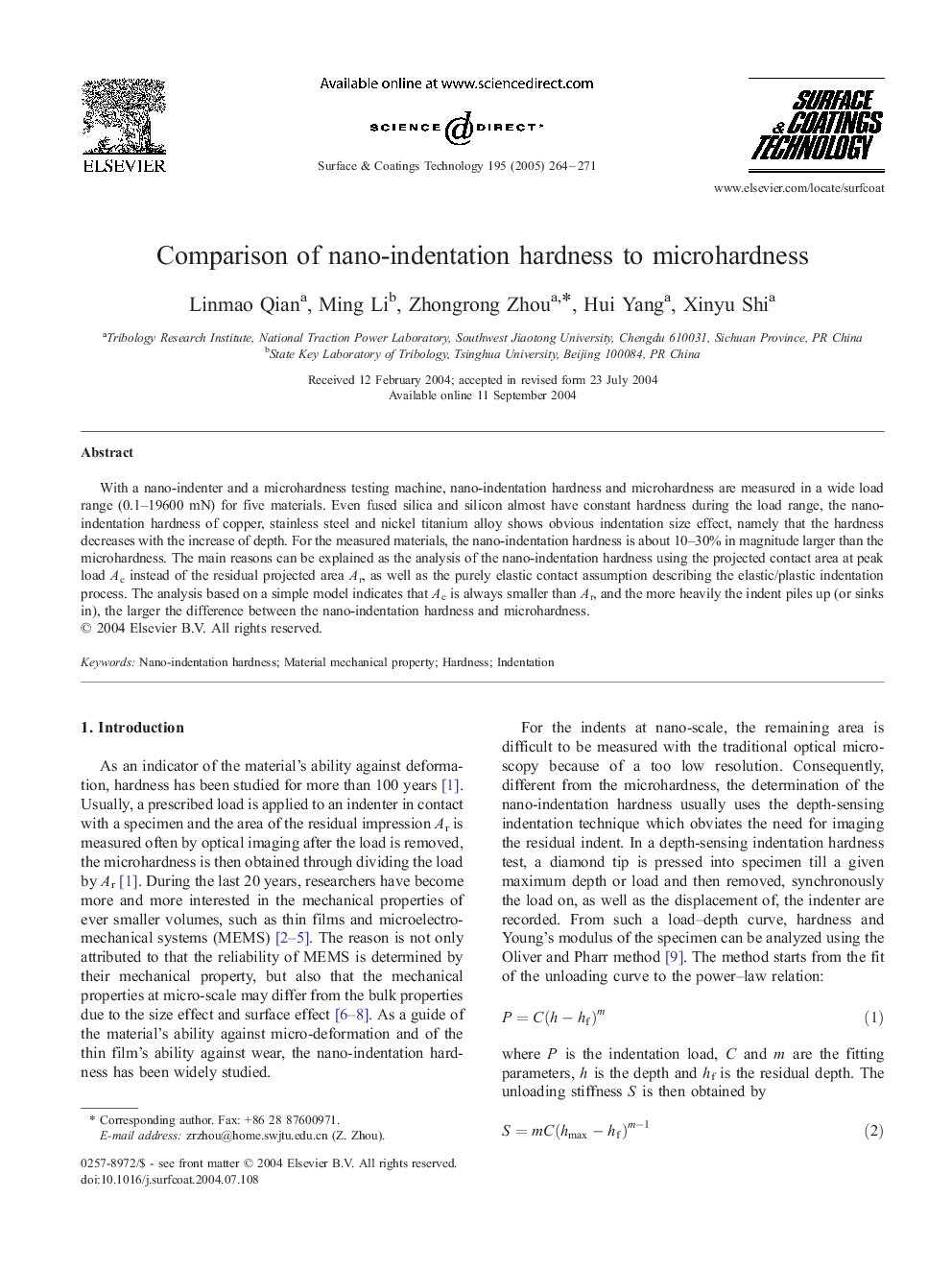| Article ID | Journal | Published Year | Pages | File Type |
|---|---|---|---|---|
| 9809753 | Surface and Coatings Technology | 2005 | 8 Pages |
Abstract
With a nano-indenter and a microhardness testing machine, nano-indentation hardness and microhardness are measured in a wide load range (0.1-19600 mN) for five materials. Even fused silica and silicon almost have constant hardness during the load range, the nano-indentation hardness of copper, stainless steel and nickel titanium alloy shows obvious indentation size effect, namely that the hardness decreases with the increase of depth. For the measured materials, the nano-indentation hardness is about 10-30% in magnitude larger than the microhardness. The main reasons can be explained as the analysis of the nano-indentation hardness using the projected contact area at peak load Ac instead of the residual projected area Ar, as well as the purely elastic contact assumption describing the elastic/plastic indentation process. The analysis based on a simple model indicates that Ac is always smaller than Ar, and the more heavily the indent piles up (or sinks in), the larger the difference between the nano-indentation hardness and microhardness.
Related Topics
Physical Sciences and Engineering
Materials Science
Nanotechnology
Authors
Linmao Qian, Ming Li, Zhongrong Zhou, Hui Yang, Xinyu Shi,
